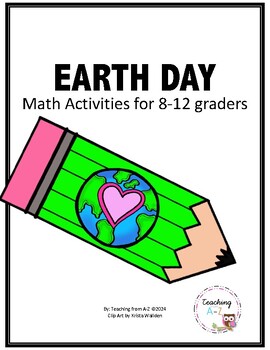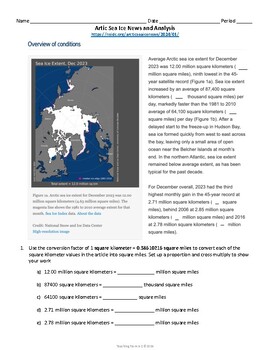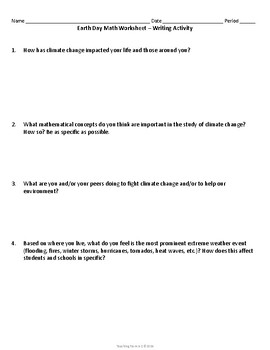Earth Day Math Worksheets
Description
Just updated, this Earth Day Math Worksheets will get your students practicing how to do online research, read an article and answer questions, and practice the following mathematical computations:
•Scientific notation
•Converting from degrees Celsius to degrees Fahrenheit
•Converting square kilometers to square miles
•Rounding to the nearest hundredth
•Rounding to the nearest integer and whole number
•Rounding to three significant figures
It’s recommended that students work individually on the writing prompt, then work together in pairs or small groups of 3 to complete Activities 2, 3 and 5. It’s best to do activity 4, Earth Day Statistics, as a whole group activity and have a discussion about these facts.
Activities included in this Earth Day Math Worksheets Unit:
1. Earth Day Math Worksheet – Writing Activity
2. Hurricanes Background Information, Hurricanes Activity Worksheet and Answer Key
3. Artic Sea Ice News and Analysis Activity Worksheet and Answer Key
4: Average Rainfall Activity with Answer Key
5. Earth Day Statistics and Answer Key
Clipart by: Krista Wallden
Please remember:
This purchase is for one teacher only. This resource is not to be shared with colleagues or used by an entire grade level, school, or district without purchasing the proper number of licenses. Multiple licenses can be purchased at a discounted price.
This resource may not be uploaded to the internet in any form, including classroom/personal websites or network drives. Leave feedback to earn credits for future purchases.
Buy this Earth Day Unit and save. However, if you're looking to for singular activities, check these out:
Data Analysis Grades 6-12 Hurricanes Activity
Double Bar Graph, Averages, and Data Analysis: Average Rainfall Activity





